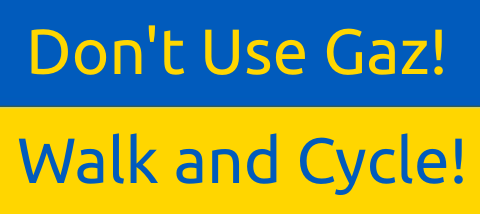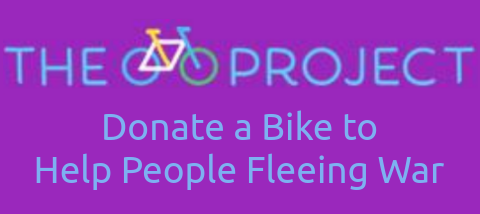"Going Dutch" has become a common theme with cycle campaigners, but why? Other countries have built cycling infrastructure and achieved pretty good results, so what's so special about the Netherlands? The bottom line is that the Dutch have rethought how they do infrastructure. Rather than a hotch-potch of incremental design changes they engineer their infrastructure holistically to make everything work without conflict. The quality of the engineering extends down to considerable detail, such as what shape kerb stones should be.
The irony is that the Dutch cycle paths are not really cycle paths at all. They are in fact an extensive light transport network that is mainly, but not entirely, segregated from heavy transport (cars, trucks, buses, etc). This network is thought of as cycling infrastructure simply because most of the vehicles on it are conventional bicycles. Some of the other vehicles using it will be familiar to people in this country, such as electric scooters for people with disabilities, but there is a whole range of additional vehicles that are only practical if there is light transport infrastructure. According to David Hembrow, the veteran cycle campaigner and blogger, the vehicles include:
|
|
|
Notice that not only is there a considerable range here, some of these vehicles are powered by petrol engines. This is totally at odds with what people assume is a cycle network, but it is completely logical. In Britain we see nothing unusual about segregating light rail (trams) from heavy rail (trains). It's done because trains are faster and heavier than trams, and consequently they have higher levels of robustness. If the two were to collide, a tram is likely to be completely destroyed by a train. The same is true of other forms of transport, so the Dutch have rules about when they must be segregated. It's irrelevant that the vehicle has a petrol engine, what is important is how great is the difference in speed and power, and how great will be the damage to the more vulnerable vehicle should the two collide. That difference is why light transport is segregated from heavy transport whenever the speed or traffic density is considered too dangerous. It is that segregation that allows people to choose from a far wider range of vehicles than we can in Britain, and it just so happens that all of those vehicles are far more sustainable than private cars. So if we want sustainable private transport, the Dutch already have a tried and tested solution. It makes far more sense to copy them than to try and re-invent the wheel, as it will be quicker and cheaper, and we can avoid all the mistakes the Dutch have made in the past. However, that does mean studying and understanding the engineering, not taking a look at Google Street view and then building what the engineer thinks he or she can see. That is why Push Bikes recommends David Hembrow's independent study tour. On the tour David also shows that which is not good, because not all Dutch infrastructure is good. Sometimes Dutch engineers neglect to follow their own rules (laid out in the CROW manual), and sometimes they experiment and the experiment is a failure.
The Beneficial Effect of Light Transport Infrastructure on Motoring
In Britain when we build cycling infrastructure it is always squeezed into any space not occupied by motorists. This results in awful routes that hardly anyone uses, so car usage is unaffected and we see no benefit whatsoever. The Dutch move motor vehicles out of the way of light transport, so the slower and often human-powered light transport benefits from high quality direct routes, making it an attractive option. This reduces the number of journeys made in private motor vehicles, and since motor vehicles take up a lot of space, roads rapidly become less congested. This makes motoring much less frustrating, and allows motor vehicles such as cars to take much more advantage of their greater speed. Thus the slight increase in distance that results from this way of doing things does not result in a longer journey time. In addition, freely flowing traffic uses significantly less fuel than congested, stop-start traffic. So Dutch infrastructure benefits both motorists and cyclists.
The Dutch have not cut back on car parking. In fact it is cheaper and more available than in the UK, because the modal shift towards light transport means that car parking space is not a valuable commodity. The irony is that rather than car parking being in short supply, it is bike parking that is a problem. Of course building parking space for bikes is much cheaper than building parking space for cars, but even the Dutch struggle to keep up with the demand.
Although it has no relevance to cycling, it is also worth mentioning that the Dutch have worked to make their road designs intuitive and easy to use.
The Beneficial Effect on Bus Travel
British infrastructure designers often elect to direct cyclists along bus lanes. The completely different nature of the two vehicles means that a large, heavy vehicle and a light, vulnerable road user end up playing a most unpleasant game of leapfrog. This benefits no-one. The Dutch do not do this, but they do place cycle parking at bus stops. This allows people to cycle to bus stops, and since this allows people to travel further to get to the bus stop, the bus does not have to take a convoluted route that includes every district centre. That, along with the reduced road congestion, makes bus travel faster and more attractive. A popular, full bus represents a highly efficient means of transport, and as such is one of the most sustainable forms of powered transport there is.
The Beneficial Effect on Disabled People
Note that a number of the vehicles mentioned in the table above are specifically for people with disabilities. Disabled people in the Netherlands don't have to rely on Ring and Ride buses, they get about using their own vehicles, with or without electric assist, and with adaptations made as necessary. Disabled people are in general financially disadvantaged, making private cars just too expensive. Also in some cases the nature of the disability may make it impossible to react fast enough to control a car.
The Beneficial Effect on Childhood Freedom
Dutch infrastructure is sufficiently safe to allow children to cycle to kindergarten. From the age of nine, children cycle long distances completely independently, with no requirement to be driven everywhere by Mum and Dad. Dutch children have childhood freedom.
Flatness and Other Myths
Those opposed to copying the Dutch always have a long list of excuses available, and right at the top will be flatness. Firstly, not all of the Netherlands is flat, but even in the hilly bits people cycle in vast numbers. Germany is also noted for its hills, but more people cycle in Germany than here. There is a down-side to flatness, and that is wind. The reason why the Dutch built windmills to drain their land is because they have wind in abundance. Cycling into a head wind is far harder than cycling up and down hills, because with hills most of what you put in on the way up you get back on the way down. The Germans have of course measured things carefully. They have thus been able to prove that what stops people cycling is not hills, but what everyone gives as their first response when asked why they don't cycle. The reason why people don't cycle is because they consider riding on the carriageway with motor vehicles too dangerous. Germans towns have measured the modal share of bikes before building infrastructure, and found it to be about 1-2% of journeys, which is the same as in Britain. They then spend ten years or so building infrastructure, and find the modal share is now about 20%. Dutch towns have built better infrastructure, and achieved more like 50%. The better the infrastructure, the further people are prepared to cycle, and the higher will be the modal share. That 20% figure corresponds with the number of car journeys of less than a mile made in towns without cycling infrastructure. The reason why the Dutch (and other nations) cycle is because it's safe and pleasant, not because the Netherlands is flat.
Of course having destroyed the flatness myth, there then follows a long line of increasingly imaginative and bizarre excuses for not getting on with the job. Thankfully David Hembrow has been compiling a list of excuses in order to debunk them, so there is no need to repeat the exercise here.


